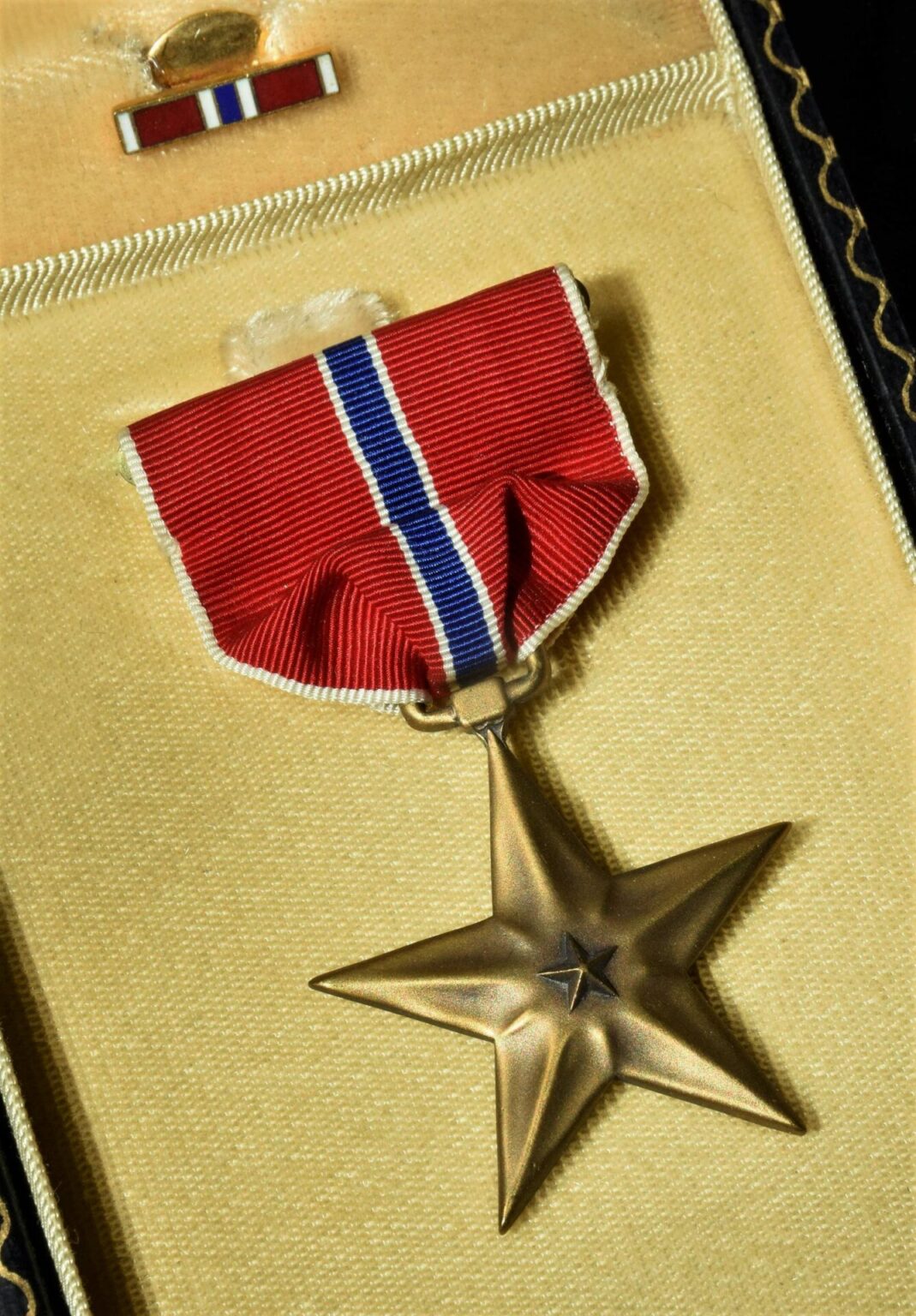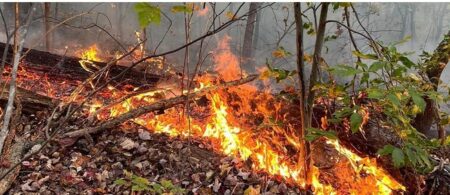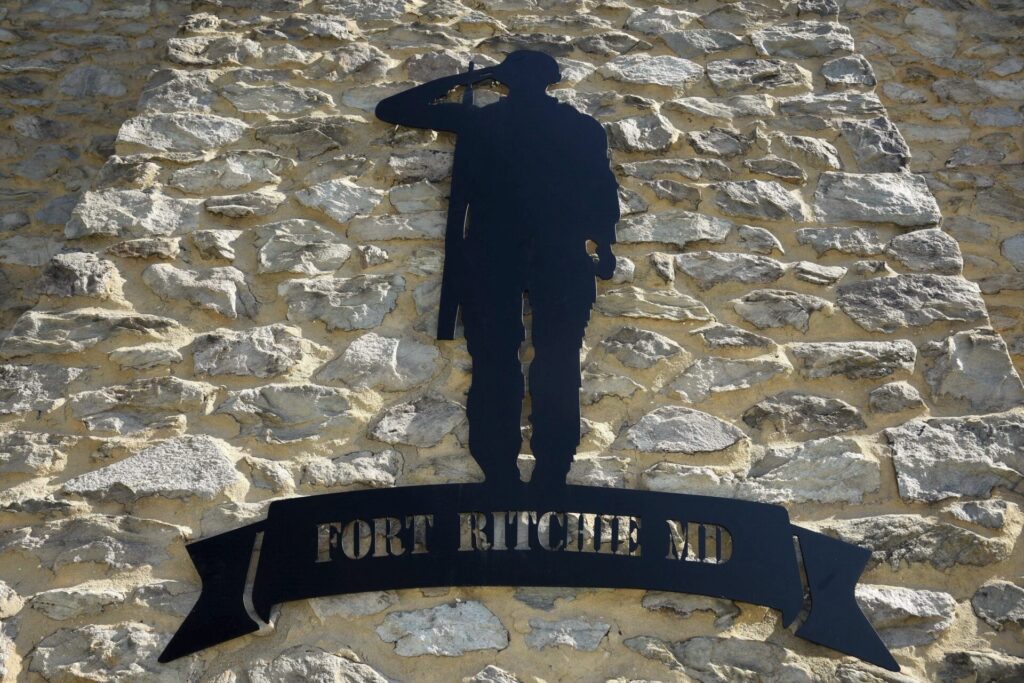
The new Ritchie History Museum opened in June, 2023, with fascinating exhibits that recall a unique place in American history. Stories are preserved from legions of soldiers who passed through Fort Ritchie’s gates. The museum also interprets successive phases of the property’s illustrious past, while offering a glimpse into a new chapter in the Ritchie story.
EARLY HISTORY
As visitors enter the museum, the first exhibit features a gigantic metal saw. The instrument served no military purpose but was used to cut the property’s first commercial product: ice. Long before the army arrived, the Buena Vista Ice Company formed in 1889. The enterprise bought a 400-acre tract of Cascade, Maryland land, located 1400 feet above sea level in a scenic high valley. The company’s mission: when the cultivated ice became eight inches thick, they’d harvest it from manmade Lake Royer during winter months- then ship the ice to regional customers.
After logistical problems plagued Lake Royer (soot from nearby train tracks soiled the ice), a second upper lake was constructed. Wooden ice storage houses were also built, and each kept 32,000 pounds of ice chilled- supposedly for as long as three years. But the march of technology eventually made harvesting ice south of the Mason-Dixon Line impractical, and the company disbanded. The two lakes were left behind, their use switched to relaxing summertime recreation. In 1926, the property finally found its true calling.
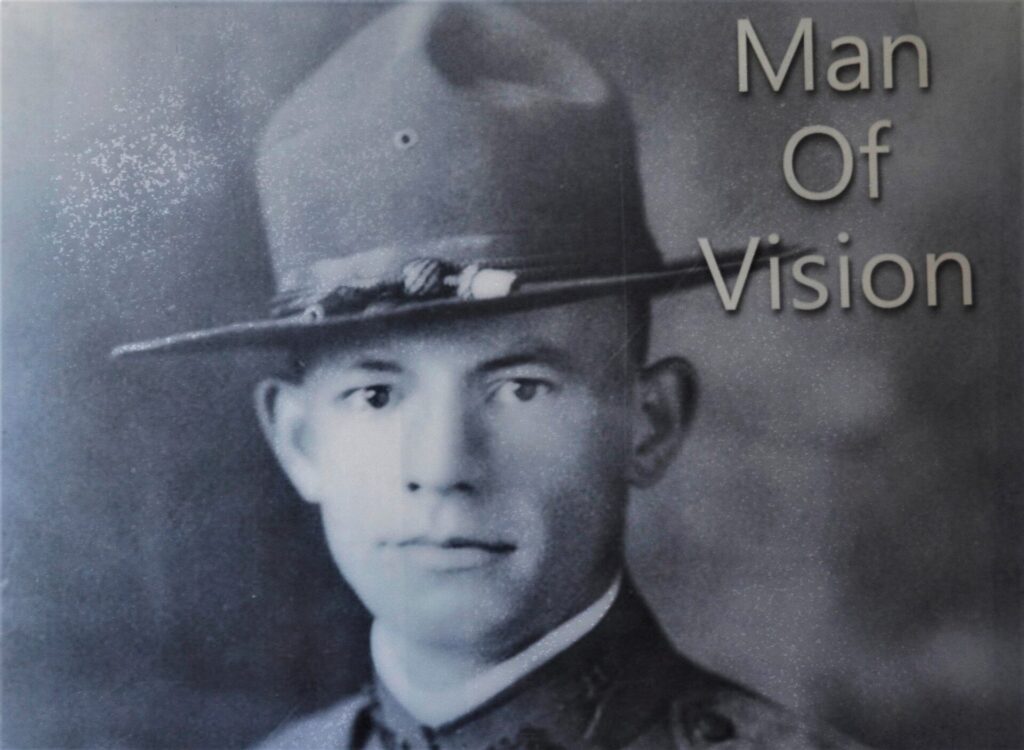
After World War I, the Maryland National Guard searched for a new summer training camp. The Buena Vista Ice property offered suitable conditions: a cool Appalachian Mountain climate and proximity to the Western Maryland Railroad and existing telegraph lines. The state purchased the land and set up a new camp, naming it for sitting Governor, Albert Ritchie.
Soon after, a unique man was tasked to lead Camp Ritchie’s development. Robert Barrick was a handsome officer and WWI veteran. He possessed no engineering background (his education only seventh-grade level), but military leadership recognized his innate talent. They entrusted Barrick with designing and constructing all the camp’s stone buildings. Most of Barrick’s rustic structures remain today, an architectural legacy of his long military service. He retired in 1953 with the rank of lieutenant colonel. A Ritchie History Museum exhibit calls Barrick a “Man of Vision”.

THE RITCHIE BOYS
During the World War II period (1941-45), German and Italian POW’s arrived at Ritchie and the Federal government initiated a critical new mission. A Military Intelligence Training Center was activated in June, 1942. Among the 20,000 troops trained at Camp Ritchie, some had high fluency in European languages and cultural customs. Many were Jewish refugees born in Germany and Austria.
These gifted men were specially trained to elicit battlefield intelligence and other valuable war-time information. Later called the “Ritchie Boys”, they risked their lives, leaving Camp Ritchie’s safety for a return to war-torn Europe. They worked in 6-man teams and were present on the front lines for the D-Day invasion and at the Battle of the Bulge. Some never returned.
The results the Ritchie Boys achieved were staggering. It has been estimated that 60% of all German battle intelligence came from this group. They served in many capacities, including photo and terrain analysis, interrogation, and counterintelligence. After Germany surrendered, the Ritchie Boys took on new duties as Nazi hunters. They helped track down and then convict many war criminals at the Nuremburg trials. Many Ritchie Boys went on to become professional spies for the Office of Strategic Services (OSS), a superseding agency of the modern CIA.
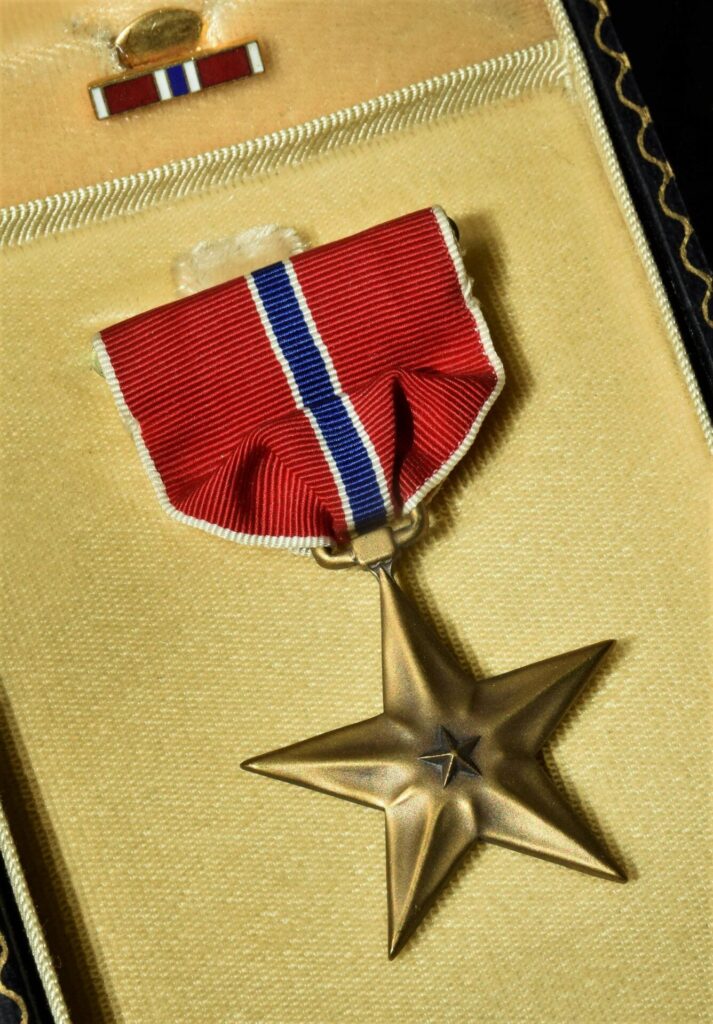
Some of the Ritchie Boys left the military for calmer pursuits. The famed author J.D. Salinger (who wrote “Catcher in the Rye”) was a member. Archibald Roosevelt, son of President Theodore Roosevelt, was another. Some Ritchie Boys simply pursued lives as peace-time American citizens, like Phil Sureck, an Oklahoma native who won a Bronze Star, which is displayed at the museum.
While most of the Ritchie Boys have died, a few of those men still reminisce about their military exploits. One member, a 101-year-old German immigrant named Guy Stern, was interviewed in 2022 for a 60 Minutes episode. Stern was the only member of his Jewish family to escape alive from Nazi Germany.
Stern’s amazing prime time recollections made his group into a household name. Up to that time, the Ritchie Boys covert unit was largely unknown by the American public. Now, the Ritchie History Museum tells their collective tale in greater detail, calling those men “secret heroes.”
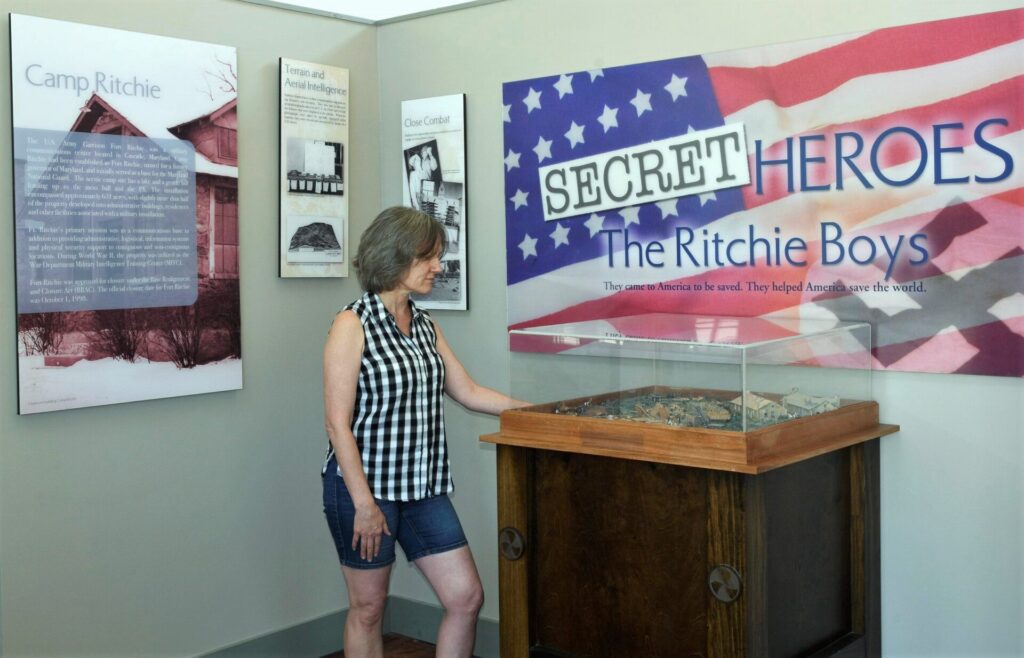
POST WAR YEARS
After World War II, Camp Ritchie was officially sanctioned as a military base. For almost fifty years, Fort Ritchie served as a vital outpost in the American military system, sending soldiers to every conflict from the Korean to the Gulf War. As part of their mission to honor veterans, a permanent Ritchie History Museum exhibit focuses on Korean War vets and their invaluable service.
By the early 1990’s, Fort Ritchie was a United States Information Systems Command, with over 2,500 civilian and military employees. Ritchie’s support of the Raven Rock Mountain Complex (Site R) gave it additional military importance.
A few years later, Fort Ritchie faced a new peace-time foe. The Base Realignment and Closure Commission formed in 1995. It would ultimately recommend 32 major U.S. bases be shut down. Despite its long-standing service to America’s military, Fort Ritchie was one of those doomed bases, ordered closed in 1998.
Afterward, a difficult question lingered: what should be done with a decommissioned military base? A new phase of inactivity and uncertainty would plague the former Fort Ritchie property for more than two decades.

PRESENT DAY
In April, 2021, investor John Krumpotich bought the Fort Ritchie property. His stated mission was restoring the fort’s former luster, while repurposing the land for mixed-use development. The first priority was to rehab the base’s rustic stone structures and bring them back to functional use. Krumpotich’s project, dubbed the “Ritchie Revival”, has lived up to that promise, as many buildings have already been refurbished.
The former officer’s club is now Lakeside Hall, an upscale event venue nestled next to Lake Royer. A charming compound home, once occupied by Commander Barrick, was converted into the Greenhouse Cafe. Two manufacturing facilities and a primary healthcare office also opened on the grounds. This autumn the Top Secret Tap Room and Nisei Gallery are scheduled to debut inside Fort Ritchie. In a modern twist of art imitating life, the Ritchie History Museum was recently used as a backdrop for a TV episode of “Special Ops: Lioness” on Paramount+.
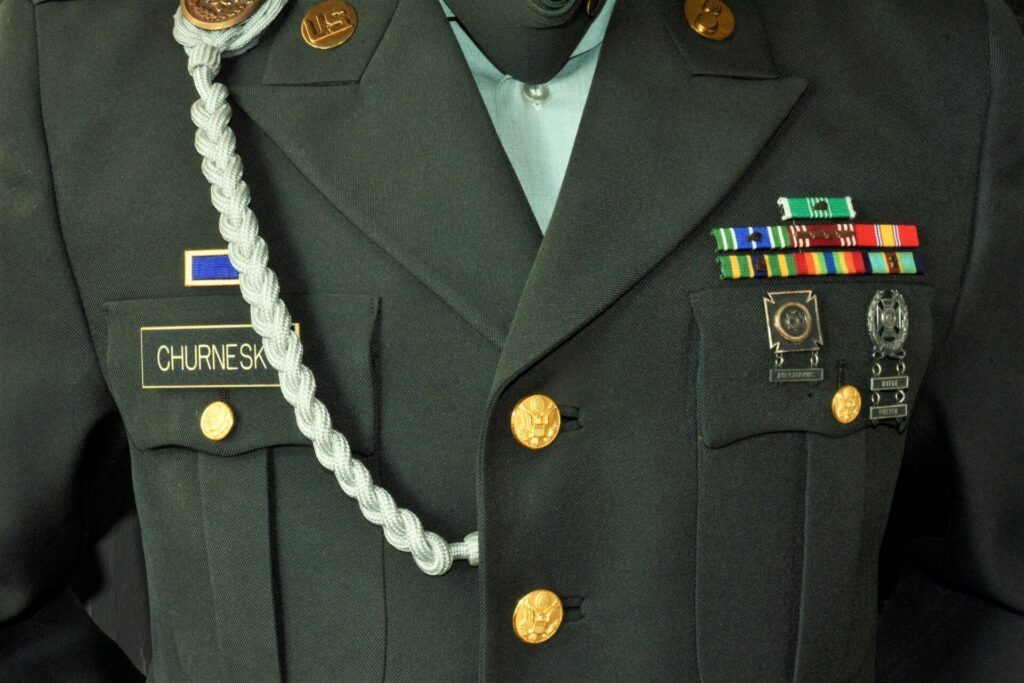
The Ritchie History Museum is a wonderful example of the fort’s revival. It expertly tells the tales of Ritchie’s intriguing past. But the museum’s quality also hints to what this retired base might achieve as it pursues a new phase in its journey.
For more Fort Ritchie information, call, or visit these websites (ritchierevival.com, ritchiemuseum.org/301-781-7740, EventsAtLakesideHall.com/301-241-2231, TheGreenhouseCafeFortRitchie.com/301-781-7408)



